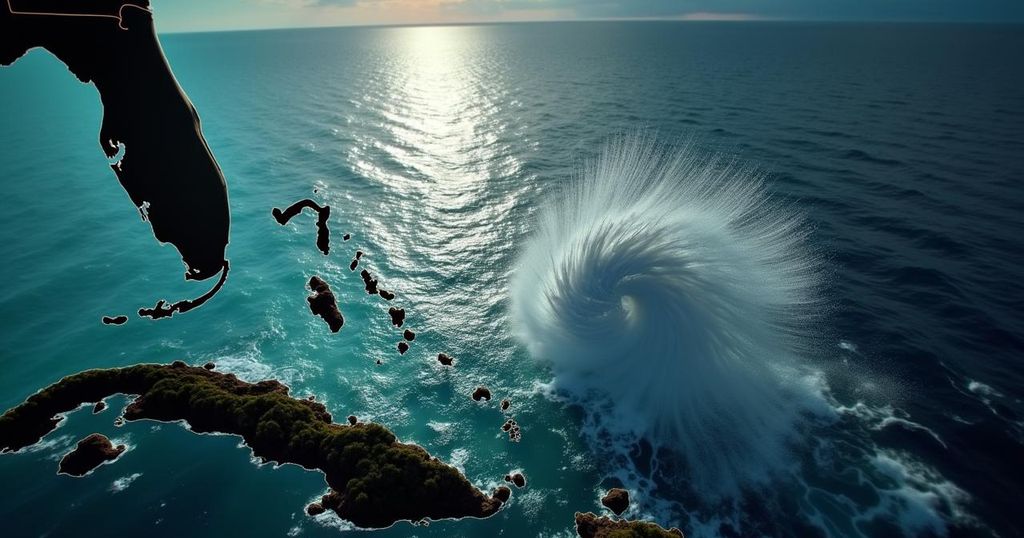Hurricane Milton Upgraded to Category 2 as Florida Prepares for Impact

Hurricane Milton has escalated to a Category 2 storm with current winds of 100 mph and is expected to reach Category 4 before weakening slightly as it approaches Florida’s west coast. Preparations including evacuation plans and state emergency declarations are underway, with significant rainfall and storm surge anticipated, raising concerns for flooding and wind damage.
Hurricane Milton has intensified in the Gulf of Mexico, now classified as a Category 2 hurricane with maximum sustained winds reaching 100 mph. This upgrade follows its initial classification as a Category 1 storm earlier on Sunday night, as reported by the National Hurricane Center (NHC). It is anticipated to further strengthen, possibly reaching Category 4 by late Monday night, before ultimately making landfall on Wednesday as a Category 3 storm near Madeira Beach in Pinellas County, as conveyed by Florida Governor Ron DeSantis. The storm is currently positioned over warm waters with optimal conditions for intensification, including light wind shear. Governor DeSantis warned that Milton’s expected storm surge could surpass the devastation observed during Hurricane Helene, which struck the Florida Big Bend region in September, resulting in over 230 fatalities across multiple states. Kevin Guthrie from the Florida Division of Emergency Management indicated that the state is preparing for the largest evacuation since Hurricane Irma in 2017. In response to the impending threat, Governor DeSantis declared a state of emergency for 35 counties along the west coast, subsequently increasing this number to 51. Residents have been urged to prepare early by securing essential supplies. In light of previous recovery efforts, Governor DeSantis detailed that 800 members of the National Guard are currently engaged in clearing debris left in the wake of Hurricane Helene, with an additional 4,000 personnel set to assist post-Milton, along with 600 ambulances on standby. Additionally, resources and personnel that previously aided affected regions in North Carolina and Tennessee have been redeployed within Florida. The White House reported that President Biden was briefed on the impending impacts of Milton and noted FEMA’s efforts to position resources ahead of the storm’s arrival. Furthermore, ongoing rainfall from a separate weather system has already saturated the state, which increases the risk of flooding significantly, with potential rain totals from Milton expected to reach 10 inches. Consequently, storm surge and wind damage pose a significant threat to the west coast of Florida.
Hurricane preparedness in Florida has become critical as Hurricane Milton approaches the state’s coastline. The region has a history of severe hurricanes causing significant destruction and fatalities. The response efforts highlighted include state and federal support systems, including the National Guard and FEMA, which are mobilized to ensure public safety and disaster readiness. Recent hurricanes, especially Hurricane Helene, have strained resources, necessitating robust contingency plans to handle potential evacuations and emergency responses during severe weather events. Meteorological factors such as water temperature and wind conditions play a crucial role in the intensification of hurricanes, and awareness of these can help residents in their preparedness efforts.
In conclusion, Hurricane Milton’s rapid intensification marks a concerning development for residents along Florida’s west coast. The state’s proactive measures, including emergency declarations and evacuation plans, aim to mitigate the impacts of the storm. The forecast indicates potential destructive conditions, including heavy rains and severe storm surges. It is essential for residents to remain vigilant and adhere to the advice of local officials to ensure their safety as Hurricane Milton approaches.
Original Source: 6abc.com






